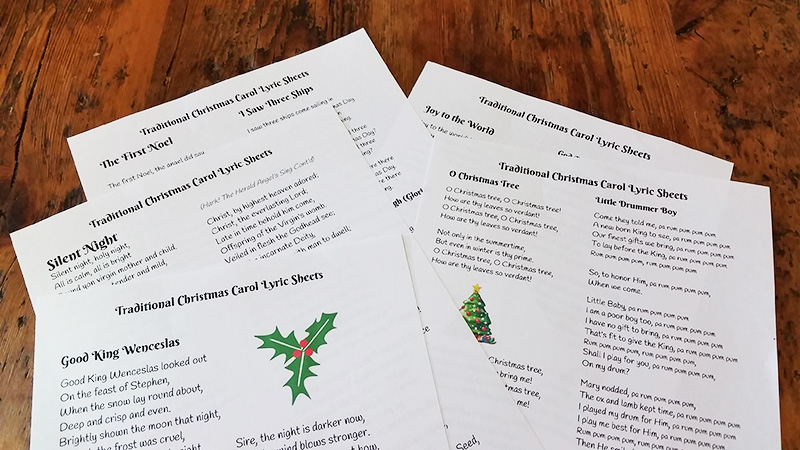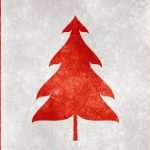Origin and History of Christmas Carols
Christmas Carols have been a part of Christmas celebrations for hundreds of years. The History of Christmas Carols starts with the tradition of singing at churches (as hymns) and has become more widespread and popular among the masses.
There is a distinct difference between a “Christmas carol” and a “Christmas song”. Christmas carols can often be sung by a choir and usually have simple and straightforward rhythms. This is rarely the case for pop and rock songs, which often have more complex compositions.
Why are they called Christmas Carols?
The most fantastic explanation of the term, “Christmas carol”, originates from England. According to this English story, a young girl named Carol got lost in the streets of London on a cold winter night. In an attempt to find her, her friends went from house to house similar to the way we do during Christmas. After this episode, the term “Christmas carol” became widespread.
The more pragmatic explanation is that the word, “Carol”, comes from the Greek dance, “Choraulein”, which is accompanied by flutes. Later, the Frenchmen replaced the flutes with singing and named it, “caroller”, which means, “to dance around in a circle”. The tradition of singing carols can be traced back to the monk, St. Francis of Assisi. He introduced the singing of carols in church ceremonies. Today, each country has its own traditions in connection with the history of Christmas carols. In many places, people walk from house to house and sing at Xmas time; in other places, Christmas carols are sung in church.
[amazon_link asins=’073903023X,B00QNF89DQ,B014JJB6KU,B005JLN9F8′ template=’ATCAmazon’ store=’allthingsch0e-20′ marketplace=’US’ link_id=’a9dbca72-6cba-11e7-ac59-9bb74b5bf991′]
Most Popular Traditional Carols
As you can see from the listings with dates below, the History of Christmas Carols is an old one, as these traditional Christmas Carols have existed for hundreds of years. Some of the same carols we sing today started out in their Latin forms as far back as the 16th Century!
| [sc_embed_player fileurl=”https://upload.wikimedia.org/wikipedia/commons/8/84/U.S._Army_Band_-_Good_King_Wenceslaus.ogg”] Good King Wenceslas Piae Cantiones, 1582. [sc_embed_player fileurl=”https://upload.wikimedia.org/wikipedia/commons/4/4b/Joy_To_The_World.ogg”]Joy to the World [sc_embed_player fileurl=”https://upload.wikimedia.org/wikipedia/commons/3/3d/God_Rest_You_Merry%2C_Gentlemen.ogg”] God Rest Ye Merry Gentlemen [sc_embed_player fileurl=”https://www.allthingschristmas.com/wp-content/uploads/2017/07/media-3275b544.mp3″] The First Noel [sc_embed_player fileurl=”https://upload.wikimedia.org/wikipedia/commons/2/28/I_Saw_Three_Ships_%28Come_Sailing_In%29.ogg”] I Saw Three Ships [sc_embed_player fileurl=”https://upload.wikimedia.org/wikipedia/commons/4/43/U.S._Army_Band_-_Hark%21_The_Herald_Angels_Sing.ogg”] Hark! The Herald Angels Sing “God Rest You Merry Gentlemen”, “The First Noel”, “I Saw Three Ships” and “Hark! The Herald Angels Sing” were published in in Christmas Carols Ancient and Modern – 1833 |
[sc_embed_player fileurl=”https://upload.wikimedia.org/wikipedia/commons/a/a0/Silent_Night_%28choral%29.ogg”] Silent Night The first song to be sung on Christmas Eve in a church, 1818. [sc_embed_player fileurl=”https://upload.wikimedia.org/wikipedia/commons/5/53/Deck_the_Halls_%28USAFB_Concert_Band%29.ogg”] Deck the Halls [sc_embed_player fileurl=”https://upload.wikimedia.org/wikipedia/commons/b/bc/U.S._Army_Band_-_O_Tannenbaum.ogg”] O Tannenbaum / Oh Christmas Tree [sc_embed_player fileurl=”https://upload.wikimedia.org/wikipedia/commons/0/03/Jingle_Bells.ogg”] Jingle Bells
|
In keeping with the distinction between Christmas Carols and Christmas Songs, we consider the following to be modern carols; likely to be sung by a chorus, carolers or wassailers.
Ding Long Merrily on High, published in 1924
The Little Dummer Boy – written in 1941. Popularized by Harry Simone Corale
Do you Hear what I Hear? – Written and released in 1962
Every one of the songs above is included in our Free Printable Lyric Sheets, which you can download below!

Today, Christmas Carols are sung both in church and in secular Christmas festivities. Christmas Carols can be sung at home, or door-to-door in the traditional manner. You can also hire Christma Carollers for special parties and occasions. Some of the best Christmas albums are a compilation of Carols and Songs, not just these traditional Christmas Carols.
Do you have anything to add about the history of Christmas Carols?
Why not join the discussion in our Forum, or by commenting below?


Leave a Reply